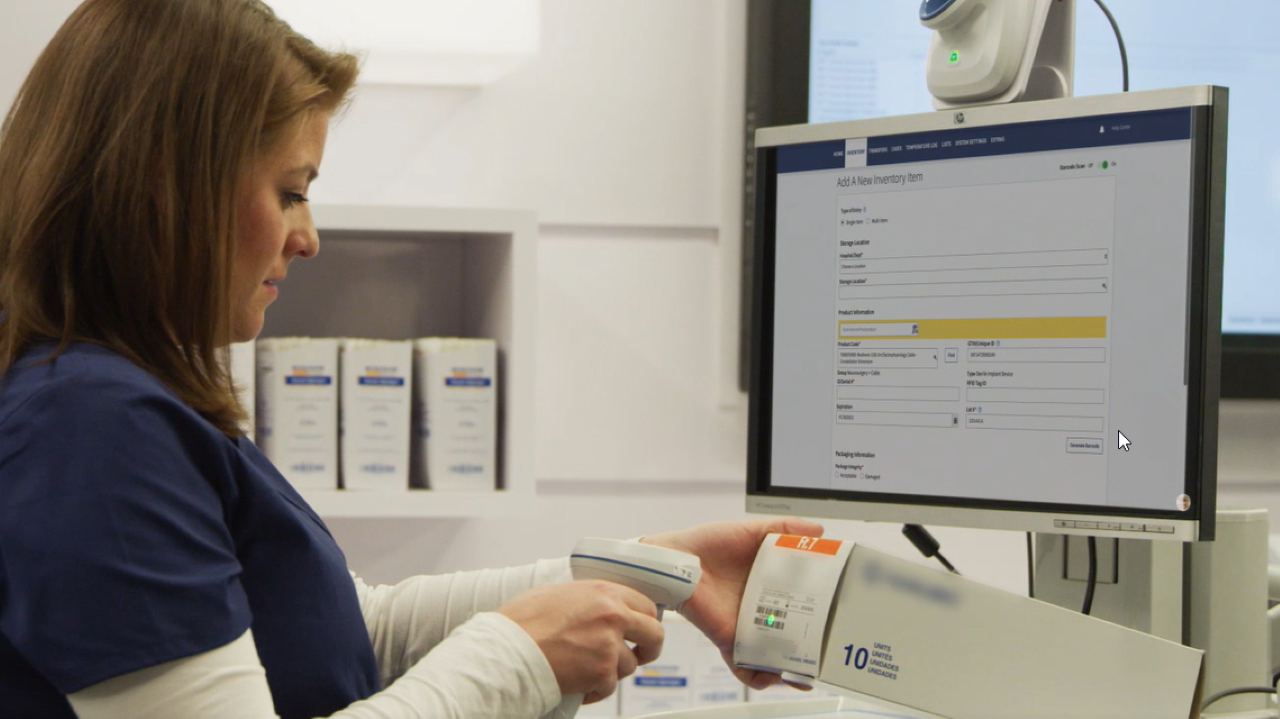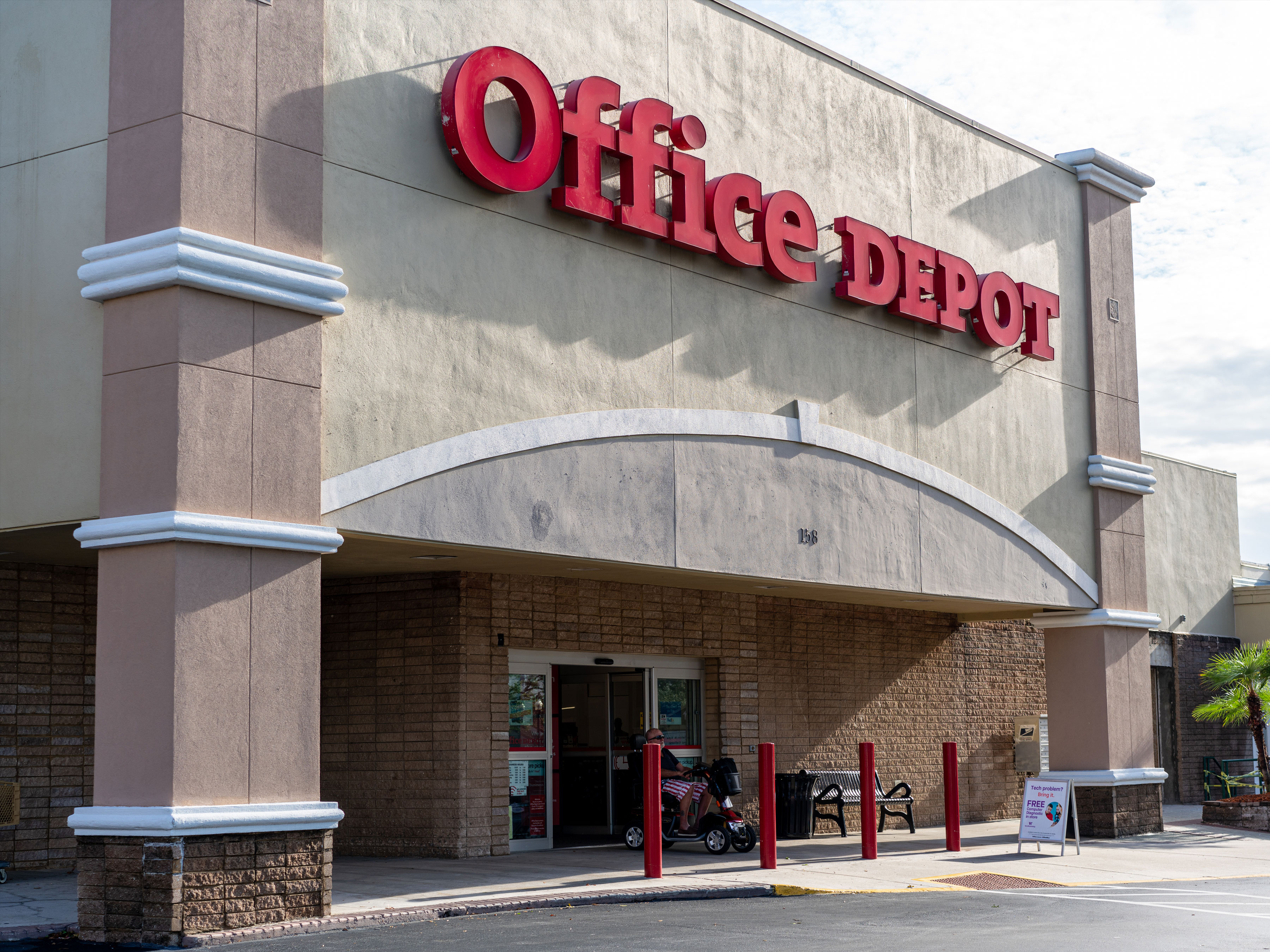Transform retail operations with Zebra’s retail technology solutions, featuring hardware and software for improving inventory management and empowering teams.
Streamline operations with Zebra’s healthcare technology solutions, featuring hardware and software to improve staff collaboration and optimize workflows.
Enhance processes with Zebra’s manufacturing technology solutions, featuring hardware and software for automation, data analysis, and factory connectivity.
Zebra’s transportation and logistics technology solutions feature hardware and software for enhancing route planning, visibility, and automating processes.
Learn how Zebra's public sector technology solutions empower state and local governments to improve efficiency with asset tracking and data capture devices.
Zebra's hospitality technology solutions equip your hotel and restaurant staff to deliver superior customer and guest service through inventory tracking and more.
Zebra's market-leading solutions and products improve customer satisfaction with a lower cost per interaction by keeping service representatives connected with colleagues, customers, management and the tools they use to satisfy customers across the supply chain.
Empower your field workers with purpose-driven mobile technology solutions to help them capture and share critical data in any environment.
Zebra's range of Banking technology solutions enables banks to minimize costs and to increase revenue throughout their branch network. Learn more.
Zebra's range of mobile computers equip your workforce with the devices they need from handhelds and tablets to wearables and vehicle-mounted computers.
Zebra's desktop, mobile, industrial, and portable printers for barcode labels, receipts, RFID tags and cards give you smarter ways to track and manage assets.
Zebra's 1D and 2D corded and cordless barcode scanners anticipate any scanning challenge in a variety of environments, whether retail, healthcare, T&L or manufacturing.
Zebra's extensive range of RAIN RFID readers, antennas, and printers give you consistent and accurate tracking.
Choose Zebra's reliable barcode, RFID and card supplies carefully selected to ensure high performance, print quality, durability and readability.
Zebra's rugged tablets and 2-in-1 laptops are thin and lightweight, yet rugged to work wherever you do on familiar and easy-to-use Windows or Android OS.
With Zebra's family of fixed industrial scanners and machine vision technologies, you can tailor your solutions to your environment and applications.
Zebra’s line of kiosks can meet any self-service or digital signage need, from checking prices and stock on an in-aisle store kiosk to fully-featured kiosks that can be deployed on the wall, counter, desktop or floor in a retail store, hotel, airport check-in gate, physician’s office, local government office and more.
Adapt to market shifts, enhance worker productivity and secure long-term growth with AMRs. Deploy, redeploy and optimize autonomous mobile robots with ease.
Discover Zebra’s range of accessories from chargers, communication cables to cases to help you customize your mobile device for optimal efficiency.
Zebra's environmental sensors monitor temperature-sensitive products, offering data insights on environmental conditions across industry applications.
Zebra's location technologies provide real-time tracking for your organization to better manage and optimize your critical assets and create more efficient workflows.
Enhance frontline operations with Zebra’s AI software solutions, which optimize workflows, streamline processes, and simplify tasks for improved business outcomes.
Empower your frontline with Zebra Companion AI, offering instant, tailored insights and support to streamline operations and enhance productivity.
The everything you need to rapidly and cost effectively develop high-performance AI vision applications on Zebra mobile computers.
Zebra Frontline AI Blueprints deliver adaptable, real-world AI frameworks that automate manual tasks and drive efficiency in high-pressure frontline operations.
Zebra Workcloud, enterprise software solutions boost efficiency, cut costs, improve inventory management, simplify communication and optimize resources.
Keep labor costs low, your talent happy and your organization compliant. Create an agile operation that can navigate unexpected schedule changes and customer demand to drive sales, satisfy customers and improve your bottom line.
Drive successful enterprise collaboration with prioritized task notifications and improved communication capabilities for easier team collaboration.
Get full visibility of your inventory and automatically pinpoint leaks across all channels.
Reduce uncertainty when you anticipate market volatility. Predict, plan and stay agile to align inventory with shifting demand.
Drive down costs while driving up employee, security, and network performance with software designed to enhance Zebra's wireless infrastructure and mobile solutions.
Explore Zebra’s printer software to integrate, manage and monitor printers easily, maximizing IT resources and minimizing down time.
Make the most of every stage of your scanning journey from deployment to optimization. Zebra's barcode scanner software lets you keep devices current and adapt them to your business needs for a stronger ROI across the full lifecycle.
RFID development, demonstration and production software and utilities help you build and manage your RFID deployments more efficiently.
RFID development, demonstration and production software and utilities help you build and manage your RFID deployments more efficiently.
Zebra DNA is the industry’s broadest suite of enterprise software that delivers an ideal experience for all during the entire lifetime of every Zebra device.
Advance your digital transformation and execute your strategic plans with the help of the right location and tracking technology.
Boost warehouse and manufacturing operations with Symmetry, an AMR software for fleet management of Autonomous Mobile Robots and streamlined automation workflows.
The Zebra Aurora suite of machine vision software enables users to solve their track-and-trace, vision inspection and industrial automation needs.
Zebra Aurora Focus brings a new level of simplicity to controlling enterprise-wide manufacturing and logistics automation solutions. With this powerful interface, it’s easy to set up, deploy and run Zebra’s Fixed Industrial Scanners and Machine Vision Smart Cameras, eliminating the need for different tools and reducing training and deployment time.
Aurora Imaging Library™, formerly Matrox Imaging Library, machine-vision software development kit (SDK) has a deep collection of tools for image capture, processing, analysis, annotation, display, and archiving. Code-level customization starts here.
Aurora Design Assistant™, formerly Matrox Design Assistant, integrated development environment (IDE) is a flowchart-based platform for building machine vision applications, with templates to speed up development and bring solutions online quicker.
Designed for experienced programmers proficient in vision applications, Aurora Vision Library provides the same sophisticated functionality as our Aurora Vision Studio software but presented in programming language.
Aurora Vision Studio, an image processing software for machine & computer vision engineers, allows quick creation, integration & monitoring of powerful OEM vision applications.
Adding innovative tech is critical to your success, but it can be complex and disruptive. Professional Services help you accelerate adoption, and maximize productivity without affecting your workflows, business processes and finances.
Zebra's Managed Service delivers worry-free device management to ensure ultimate uptime for your Zebra Mobile Computers and Printers via dedicated experts.
Find ways you can contact Zebra Technologies’ Support, including Email and Chat, ask a technical question or initiate a Repair Request.
Zebra's Circular Economy Program helps you manage today’s challenges and plan for tomorrow with smart solutions that are good for your budget and the environment.
The Zebra Knowledge Center provides learning expertise that can be tailored to meet the specific needs of your environment.
Zebra has a wide variety of courses to train you and your staff, ranging from scheduled sessions to remote offerings as well as custom tailored to your specific needs.
Build your reputation with Zebra's certification offerings. Zebra offers a variety of options that can help you progress your career path forward.
Build your reputation with Zebra's certification offerings. Zebra offers a variety of options that can help you progress your career path forward.

Is Your Hospital Taking Full Advantage of the Breakthrough Opportunities Offered by Unique Device Identification (UDI) Data?
Patient safety is the top priority for the global healthcare community, which is why strong action is being taken in the United States, European Union (EU) and beyond to improve accountability and traceability for medical device implants. Though currently mandated using regionally-defined regulations such as the Food and Drug Administration (FDA) Amendments Act of 2007 in the U.S. and the Medical Device Regulation (MDR) and In Vitro Diagnostics Regulation (IVDR) in the E.U., the widespread enactment of the Unique Device Identification (UDI) labeling requirement facilitates complete traceability of the millions of individual medical devices utilized for patient care at the serial level, as described here.
The shared goal by global supply chains and healthcare communities is to be able to locate implanted medical devices at any point in time, from the moment they’re manufactured to the moment at which they’re disposed, in order to avert negative point-of-care outcomes when a safety or quality issue is identified.
For example, if there is a recall for breast implants as was the case recently, someone would be able to instantly identify and contact patients with those implants to offer resolution options. Even better, the UDI could allow manufacturers and medical providers to pre-empt such issues by locating and pulling faulty medical devices from the supply chain – whether they’re currently on production lines, warehouse shelves or in hospital storage rooms – or flagging when an implanted device is about to expire so that it can be replaced.
There’s just one problem…
It can be very difficult to capture all available data from UDI labels and even more challenging to effectively integrate it into your many different systems in a way that benefits your practice and patients.
(Ok, those are really two different problems. But the good news is that there is a way to solve both, which I’ll get to shortly.)
The UDI Data Capture Challenge
The UDI itself can be as long as 75 characters and there are potentially hundreds of thousands of data points that can be integrated into the Device Identifier (DI) and Production Identifier (PI) serializations in each barcode, making it nearly impossible to manually extract all relevant information in an efficient and accurate manner. (Did you know that, on average, one manual data entry error is made for every 300 keystrokes?) To make it more complicated, the FDA has authorized three different standards bodies to issue the device identifiers to manufacturers, and each uses a different UDI format – all of which are regulatory compliant. Such labeling inconsistencies make UDI data capture difficult regardless of whether an employee is typing in the UDI attributes or using a barcode scanner.
The good news is that the International Medical Device Regulator Forum (IMDRF) is working with regulatory bodies, manufacturers and healthcare leaders in the European Union, U.S. and several other countries to implement a more globally harmonized and consistent approach to medical device management, especially as it relates to UDI standards. However, that will take time and you need to ensure you have the right tools to take advantage of all the valuable enterprise intelligence that UDI is delivering to your physicians, nurses, patients and administrators today – starting with a barcode scanner.
But not just any barcode scanner. It must be equipped with software that enables hospital staff to immediately capture all barcodes and UDI data fields on either the medical device packaging or the device itself with complete accuracy with a single scan.
Why is this so important?
The only way that hospitals such as yours will fully benefit from the UDI mandate is if you have a way to pull in all of the data crammed into each UDI label – and pull it all together in your back-end systems – in a highly automated fashion.
The faster you can get UDI-derived data into the electronic health record (EHR) and ERP, the faster you’ll be able to act to mitigate operational risks and improve outcomes. Depending on your UDI data strategy and system interoperability, you may be able to set up clinician alerts if there are any known issues with that device, including recall notifications. You may also be able to keep staff appraised of device expiration dates so that they can employ a first-in-first-out methodology when putting away and picking inventory in storage rooms. Then there are the billing and claims-related benefits, among a host of other potential gains. Watch this video.
Already Have Barcode Scanners in Your Hospital?
Not all barcode scanners are capable of reading all UDI label formats or data fields, and the poor quality of some 1D and camera-based scanners makes it hard to capture data on the first scan or in full. There is also a bit of specialized integration required to ensure back-end systems are properly synced with both the data capture devices – i.e. the barcode scanners – as well as the mobile computing hardware and workflow software that will subsequently be used to apply the UDI data beyond basic medical device track-and-trace applications. (We’ll discuss UDI data utilization strategies in more detail in an upcoming blog.)
That is why I always recommend that healthcare providers work with a solution partner who is highly familiar with UDI requirements and the necessary technology systems. They will help you determine which best practices and technology solutions you should implement to maximize the actionable intelligence you’ll gain from UDI labels.
In fact, if you’re headed to HIMSS 2020 in Orlando in March, I recommend that you book a meeting now with our UDI experts. They can help you assess your current technology architecture to see if you first have the data capture technologies you need to take full advantage of the UDI mandate on medical device manufacturers. From there, they can help you determine what other mobile computing and RFID technologies you may need to execute new UDI data-dependent patient care and administrative workflows. They’ll also outline hardware and software interoperability requirements and talk with you about the system integration process, some of which involves our partners. This team is well-versed in UDI requirements and experienced in designing effective solutions, as you can see in this infographic, and they can ensure you don’t miss out on an opportunity to improve your hospital’s accountability, inventory management and collections processes or patient safety measures.
If you’re not going to HIMSS but still want to learn how your hospital can best leverage UDI data now that manufacturers’ UDI mandates will be in full effect, you can also reach out to us here to set up a call or meeting.
I highly recommend that you also take a couple of minutes to watch this video if you skipped over it above. It gives a great overview of how the healthcare community can take full advantage of UDI.

Rikki Jennings, BSN, RN, CPN
Rikki Jennings, BSN, RN, CPN is currently the Chief Nursing Informatics Officer (CNIO) at Zebra Technologies where she is responsible for combining her knowledge of patient care, informatics concepts, and change management to effectively address the information and knowledge needs of healthcare professionals and patients to promote safe, effective, and efficient use of IT in clinical settings. She also serves as the strategic liaison for health IT efforts representing nursing and clinician needs.
Early in her nursing career, Rikki recognized a disconnect between purchased technologies and the understanding of their intended value at the bedside by her fellow clinicians and pursued Nursing Informatics. She is passionate about the utilization of technology to support safer, more effective care models. Over the past several years, her work in the healthcare IT industry has provided her an in-depth knowledge of the workflows and utilization of clinical technologies including clinical communication systems, bedside technology solutions, and data analytics tools in hospitals across the country. In 2019, Rikki was recognized in Crain’s Chicago Business’ Notable Women in Healthcare list.
Rikki holds a Bachelor of Science in Nursing from University of Iowa.
Zebra Developer Blog
Zebra Developer BlogZebra Developer Blog
Are you a Zebra Developer? Find more technical discussions on our Developer Portal blog.
Zebra Story Hub
Zebra Story HubZebra Story Hub
Looking for more expert insights? Visit the Zebra Story Hub for more interviews, news, and industry trend analysis.
Search the Blog
Search the BlogSearch the Blog
Use the below link to search all of our blog posts.
Most Recent
Legal Terms of Use Privacy Policy Supply Chain Transparency
ZEBRA and the stylized Zebra head are trademarks of Zebra Technologies Corp., registered in many jurisdictions worldwide. All other trademarks are the property of their respective owners. Note: Some content or images on zebra.com may have been generated in whole or in part by AI. ©2025 Zebra Technologies Corp. and/or its affiliates.




